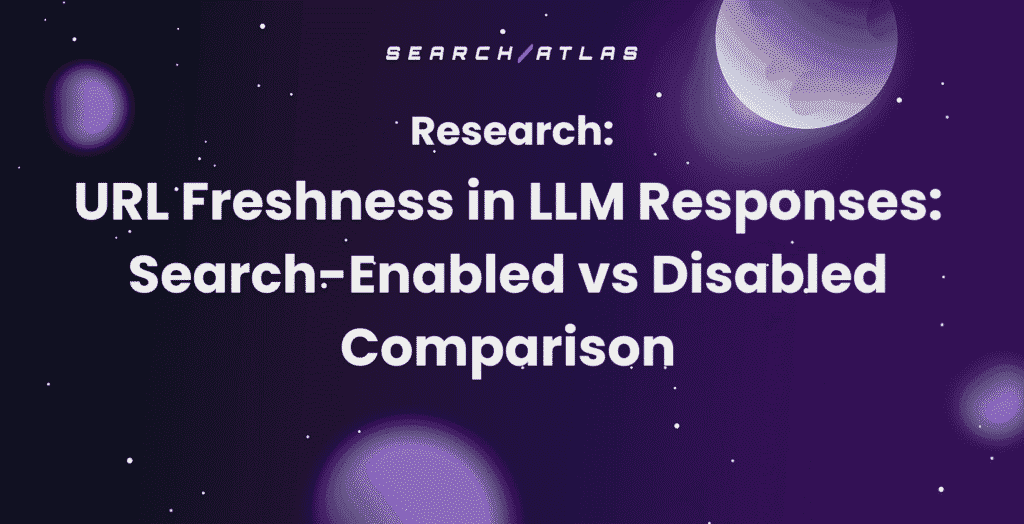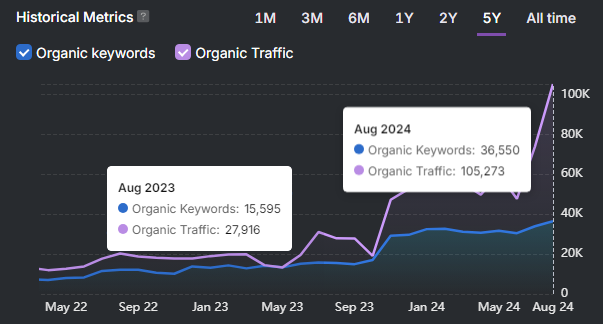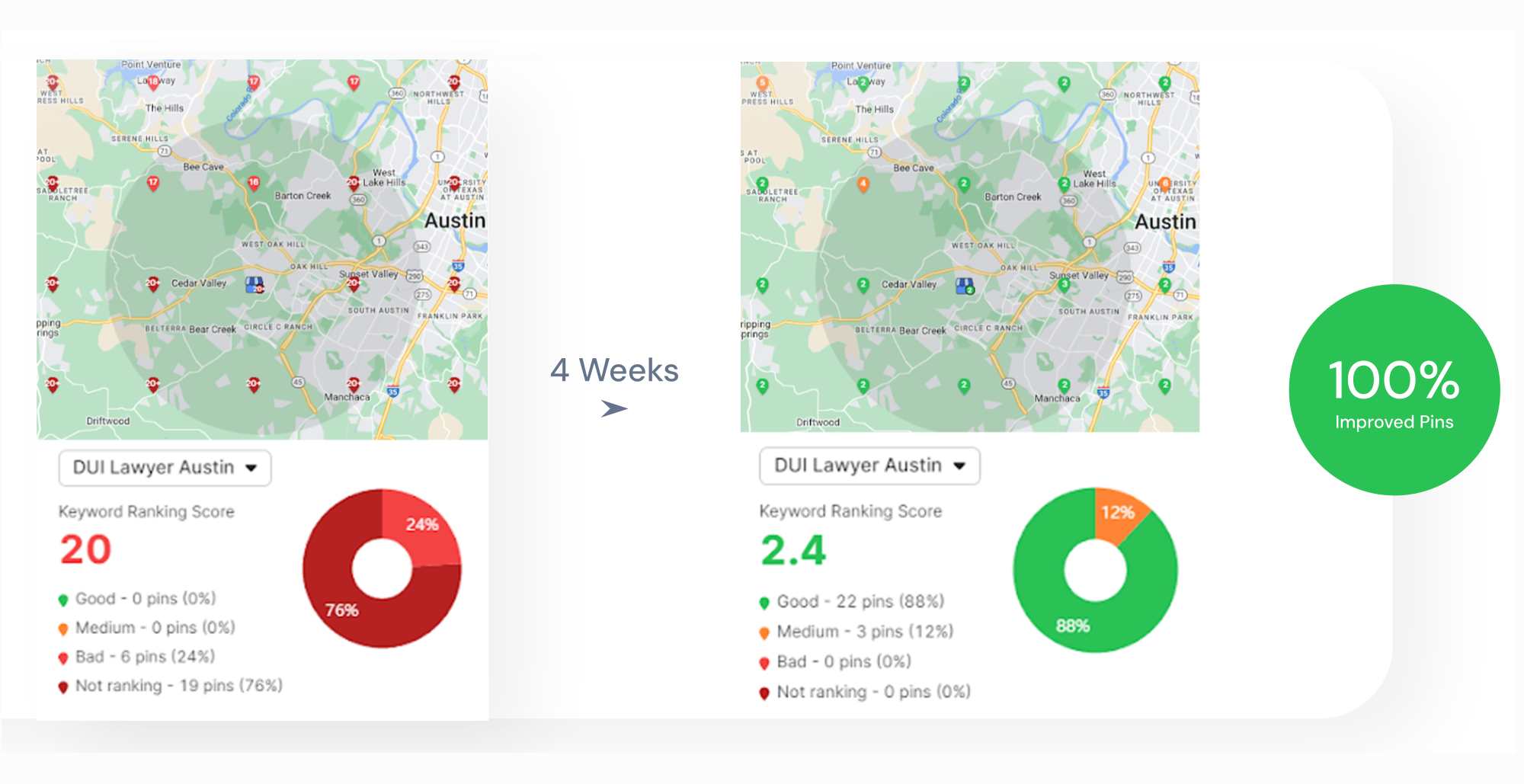Search Engine Optimization (SEO) and Search Channel Optimization (SCO) are different but related digital marketing strategies.
SEO improves visibility in traditional search engines like Google, while SCO focuses on optimizing content across all search-driven platforms, from search engines to platforms like YouTube, Amazon, and TikTok.
Marketers use the acronym SCO for two other concepts, Social Channel Optimization and Sales Cycle Optimization.
We explain and define all of these strategies, their differences, relationships, and best practices below.
What Is Search Engine Optimization?
Search Engine Optimization (SEO) is a digital marketing strategy that increases visibility on search engines. SEO helps businesses appear higher in search results on platforms like Google.
The goal of SEO is to improve website ranking. Higher rankings mean more people find the website when they search for related products or services.
Search engines (Google, Bing, DuckDuckGo) use algorithms to show the most relevant results. SEO improves a website so that it fits what the algorithms expect.

What Is Search Channel Optimization?
Search Channel Optimization (SCO) is a marketing strategy that improves visibility and engagement across multiple search-driven channels. SCO covers search engines like Google and Bing and social media platforms like YouTube and Pinterest.
SCO helps businesses create content that fits the format of each channel and its audience. SCO adapts SEO strategies to match individual channel algorithms and keywords.
To illustrate, SCO covers 3 channel types. Firstly, search engines including Google and Bing. Secondly, social media platforms including YouTube, Instagram, and Pinterest. Thirdly, online forums and discussion boards like Reddit.
SCO increases brand visibility and user engagement across all channels. Examples include optimizing product listings on Amazon with high-converting keywords and posting short-form content on Instagram with hashtags.
Other Marketing Terms With the Acronym SCO
There are two other terms with the same acronym. They are Social Channel Optimization and Sales Cycle Optimization.
Social Channel Optimization (SCO) is a social media marketing strategy that focuses on tailoring content and social profiles to align with each platform’s unique features and audience behavior.
Social Channel Optimization optimizes for the strengths of platforms like Facebook, Instagram, LinkedIn, and Twitter. It aims to improve brand visibility, increase engagement, and strengthen audience connections.
Sales Cycle Optimization (SCO) is a targeted marketing strategy focused on optimizing the customer journey across each phase of the sales funnel. It involves analyzing customer behavior and interactions to deliver the right content, offers, and messaging at the most effective touchpoints. The objective is to move prospects through all funnel stages (Attention, Interest, Desire, Action).
The Differences Between SEO and SCO
SEO remains foundational for websites. SCO incorporates that foundation and expands it to match today’s cross-platform behavior. Here is how they differ in scope and strategic depth.
Scope
Search Engine Optimization (SEO) focuses on increasing visibility in traditional search engine results, with most strategies designed to meet the requirements of Google. SEO improves website performance through methods like keyword placement, metadata refinement, site structure, and backlink building.
Search Channel Optimization (SCO) operates with a broader scope. It targets all digital environments where users search, not just search engines. This includes social media platforms, online marketplaces, video sites, forums, and voice-based interfaces. SCO optimizes content and profiles on these platforms to connect with audiences in their preferred channels.
Strategic Depth
Both SEO and SCO require technical understanding and keyword alignment, but SCO calls for greater channel-specific strategy. SEO applies techniques consistently across a single site. SCO modifies tone, structure, and format depending on the platform. A blog post is suited for SEO. A short video clip or tagged product description is a good SCO fit for platforms like TikTok or Amazon.
While SEO is about satisfying one algorithm, SCO involves coordinating many. SCO strategies require knowledge of each platform’s search logic, user behavior, and content format.
8 Best Practices for Successful Search Channel Optimization
Here are 8 best practices to optimize content across multiple digital channels and attract the right audience in each one.
1. Embrace Low-Hanging Fruit
Focus on changes that don’t take a lot of time but have a high chance of success. This approach brings faster results and builds momentum. We list three common strategies below.
- Target keywords with low competition and high relevance for all search channels.
- Use keyword tracking tools to find queries your pages already rank for on page two or three, then improve those pages.
- Update content to match search intent, adjust headers, or add relevant internal links. Focus on optimizing existing assets instead of building from scratch.
2. Improve On-Page User Experience Signals
Search channels reward content that keeps users engaged and satisfied. Improve your on-page elements to support smoother interactions and reduce bounce rates. Ensure fast load times, mobile responsiveness, and clear navigation. Use short paragraphs, clear headings, and readable fonts.
Place visual elements where they support the message, not distract from it. To improve navigation and increase engagement, follow internal linking best practices.
Users spend more time on a page when they find what they need without friction. Longer time on page signals relevance to both search engines and social platforms. Strong user signals boost rankings, increase search visibility, and create a better experience across channels.
3. Repurpose Content Across Channels
High-performing content increases impact when you adapt it for other platforms.
Examples include turning blog articles into LinkedIn carousels, breaking guides into tweets, or converting videos into reels. However, content format and tone must match each platform’s audience.
Repurposing content gives you three significant benefits.
First, production becomes faster. Second, you improve reach across different environments. Third, you increase visibility on every platform when you repurpose content with structure and intent.
4. Optimize for Local Search
Local search is important for SCO as well as SEO. Your brand earns higher placement in local search channels when it aligns content, structure, and location signals.
Best practices for local search channel optimization include the following.
- Ensure your business name, phone, and address are correct and they appear consistently across listings, including your Google Business Profile.
- Use local keywords to adapt pages to different locations. Use them in page titles, URLs, and descriptions.
- Support social media content with location tags.
- Use tools like the Schema Markup Generator to signal your local relevance to engines.
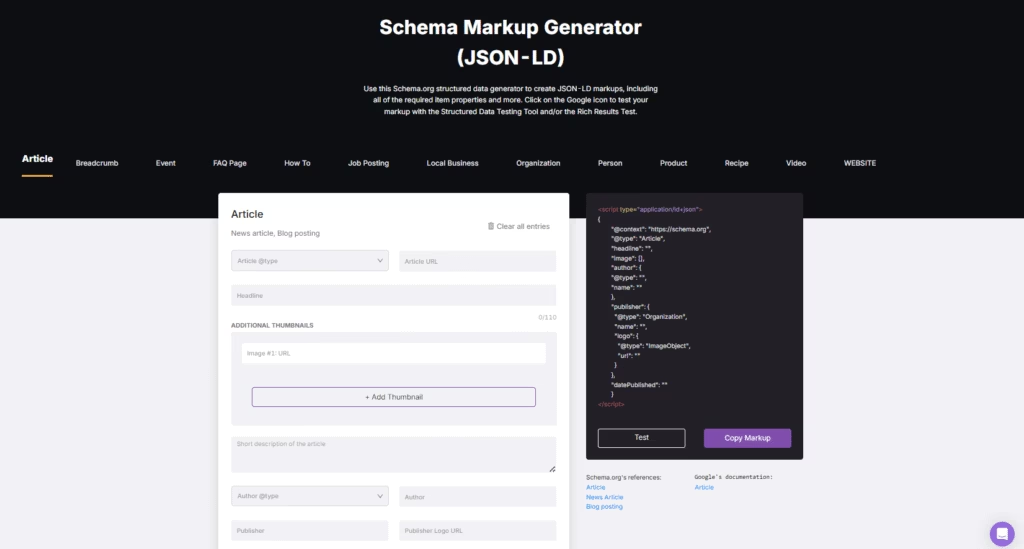
- Reinforce trust with review management.
- Provide accurate, clear details online to increase foot traffic.
- Track results and adapt your strategy to adapt to local ranking factors.
5. Optimize for Voice Search
You stay present in smart speaker responses when your structure, length, and keywords match user behavior in spoken queries. Clear, direct answers win featured positions.
We list the most common voice optimization strategies below.
- Ensure headings match how users ask questions aloud.
- Ensure fast load times and mobile readability.
- Use structured data to signal precise answers.
- Aim for a conversational tone and brief, informative content.
6. Optimize for YouTube and Other Search Engines
You increase non-Google traffic when you optimize content for other search engines and platforms. Examples of ranking factors for different platforms are below.
- YouTube ranks videos using keywords in titles, descriptions, and captions
- Pinterest ranks pins using image relevance and detailed descriptions.
- Amazon rewards accurate keywords and structured listings.
- App stores prioritize performance and metadata.
- TikTok surfaces content based on video engagement, hashtags, keywords in captions, and watch history.
- Reddit ranks posts using upvotes, engagement, keyword relevance, and subreddit authority.
- LinkedIn ranks posts using engagement, profile relevance, post type (text, image, article), and network connections.
- X ranks tweets by recency, engagement, keyword use, and user interactions.
- Instagram surfaces search results based on hashtag use, caption keywords, and engagement.
7. Automate Your Workflow
Automating your workflow helps you scale faster and respond quicker. To automate your workflow, you use AI tools like Search Atlas.
Search Atlas has tools that help your brand improve its performance. These tools include Report Builder, Site Auditor, On-Page Audit Tool, OTTO SEO, OTTO Google Ads, and AI Content Templates.
The Report Builder helps you visualize rankings, engagement, and traffic across channels (Facebook, Google Ads, web rankings, Google Business Profile). It gives you the option to schedule and automate reports.
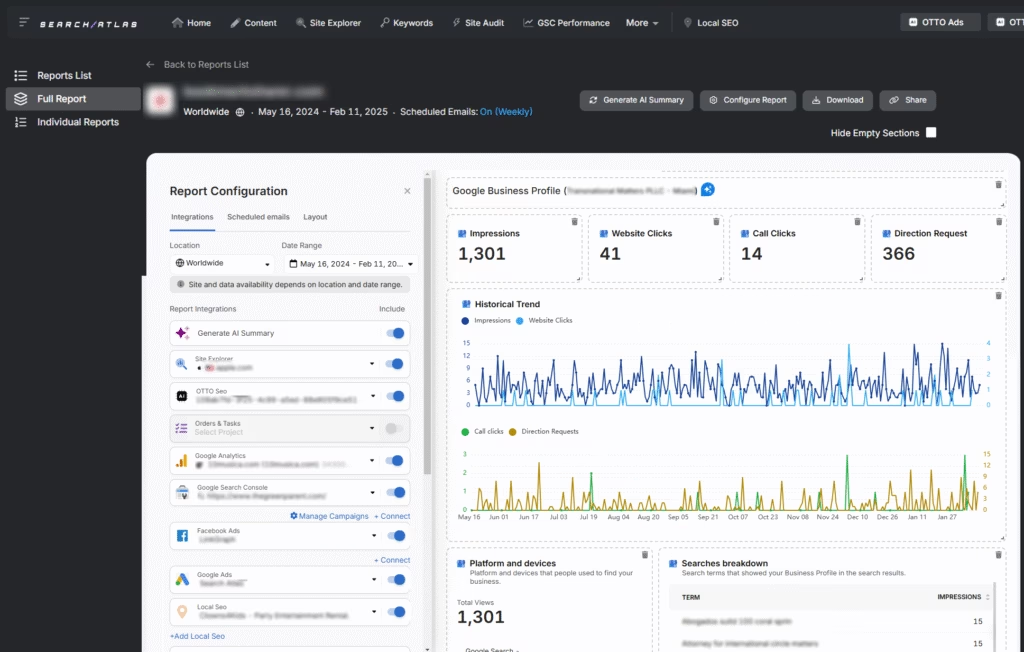
Site Auditor live alerts notify you about major shifts or potential problems. The Site Auditor tool helps you see the technical health of your website.
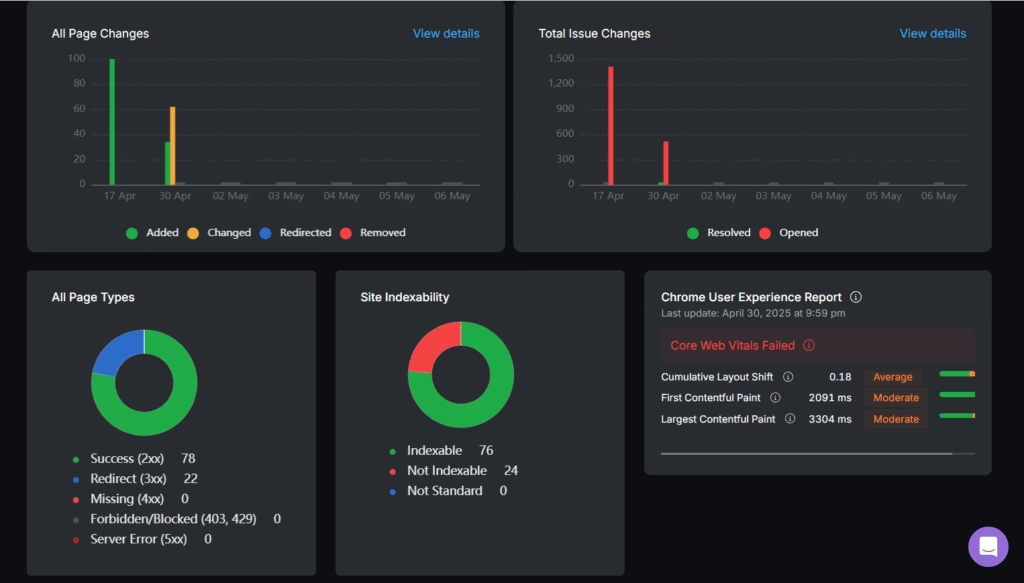
The On-Page SEO Audit Tool gives you real-time insights about your website and helps you fix user experience and SEO issues.
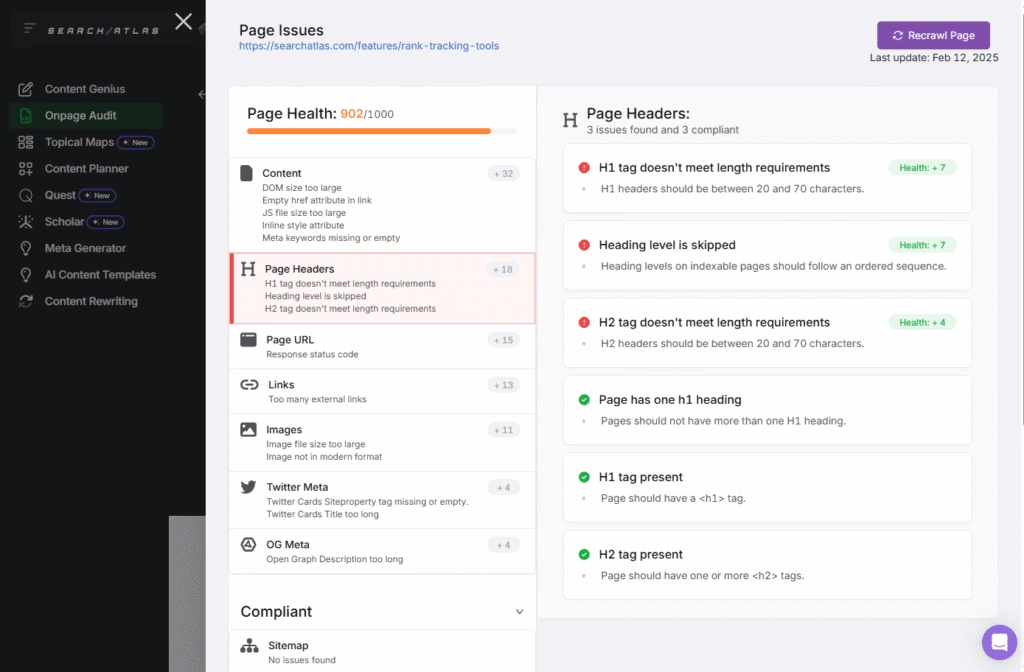
OTTO SEO is an AI agent that automates all your SEO tasks and helps you fix them from a single dashboard, with one click. These tasks include content, on-page, link building, technical, localization, reporting, and many other tasks.
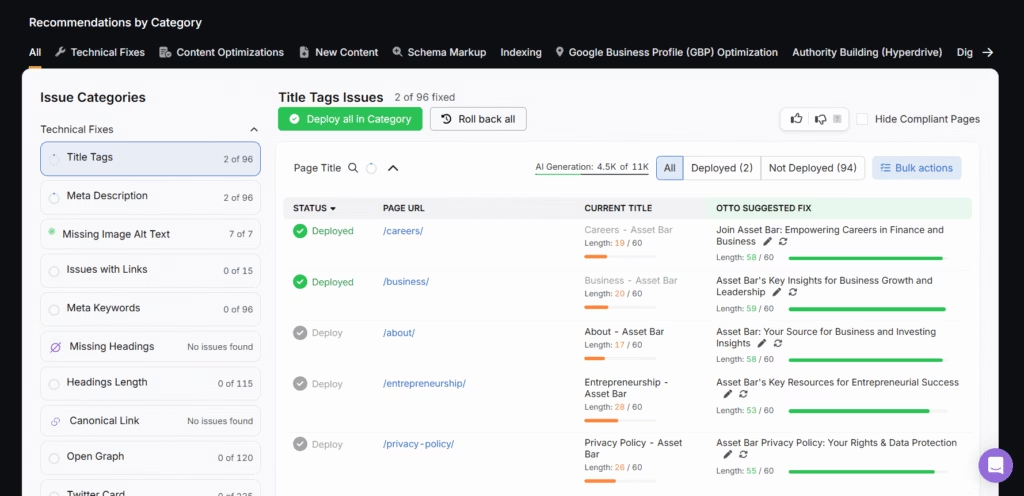
OTTO Google Ads is an AI agent that fully automates your Google Ads campaigns. OTTO Google Ads performs keyword research to find the best PPC keywords for your campaign. It creates ad groups, it writes ad copy, and launches campaigns in minutes.
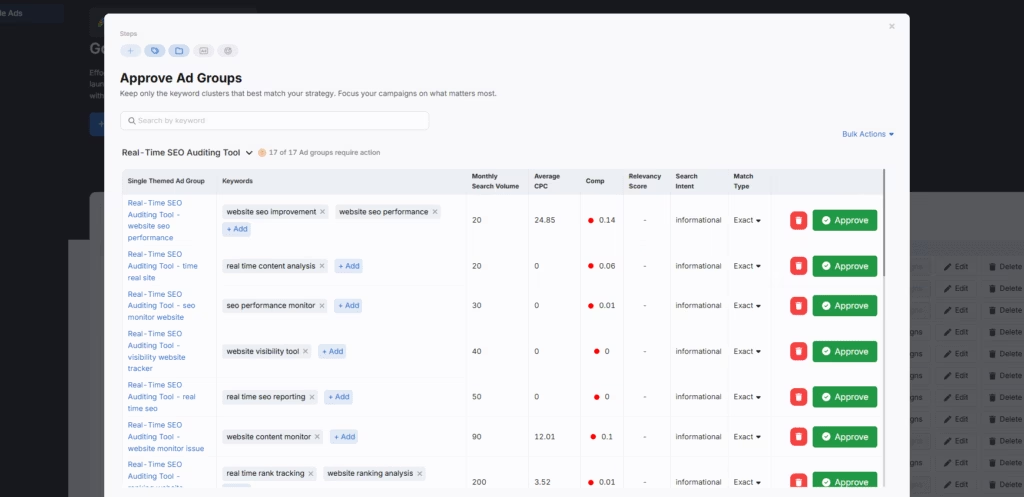
The AI Content Templates Generator is a tool that rewrites content to adapt it to different platforms, including Instagram, X, blog posts, ads, and others.
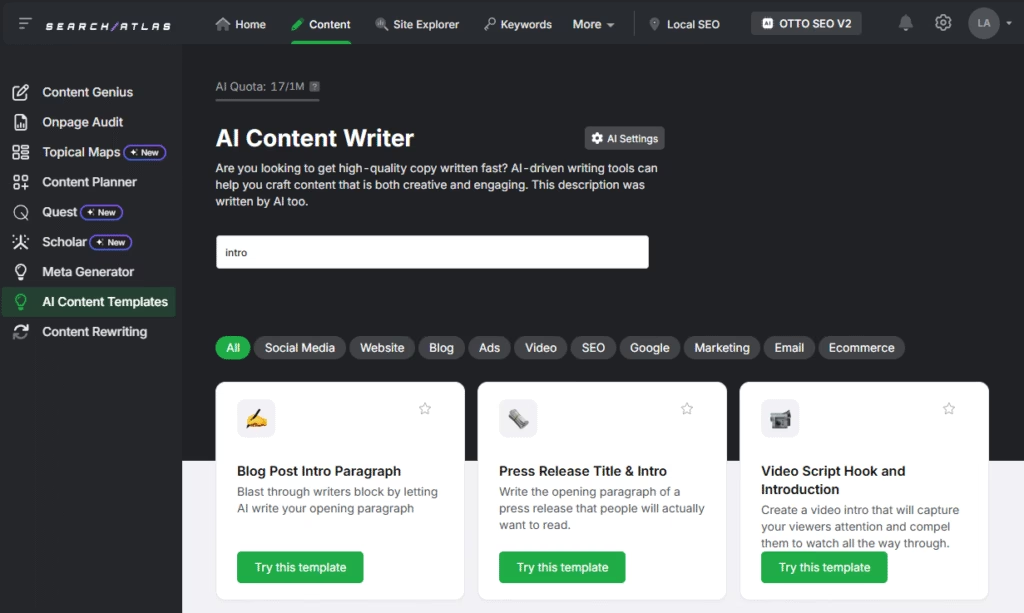
8. Monitor Performance
To ensure your SCO strategy remains solid, monitor and track your performance regularly. We list key SCO metrics below.
- Click-Through Rate (CTR)
- Engagement Rate
- Follower Growth
- Reach
- Traffic
Observe your SCO results combined with the results of your other marketing efforts. This means measuring your customer feedback, PPC, and SEO performance.
Use a Full-Search Solution With Innovative AI Tools
Search Atlas gives access to a unified platform that shows the full digital marketing presence across SEO, PPC, and digital PR. The platform tracks SEO, SCO, and PPC metrics in one interface.
Search Atlas includes 1-on-1 training and onboarding for all automated tools. The platform keeps everything in one place, without switching between tools or interfaces.
Search Atlas automates campaign tracking, reporting, and content workflows. Try Search Atlas FREE for 7 days. Cancel anytime.







